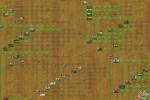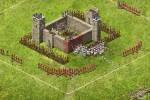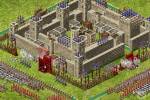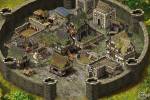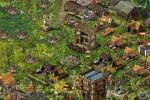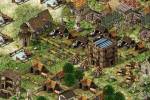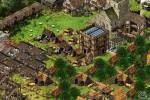Stronghold Kingdoms Review
We took an extended look at Stronghold Kingdoms from Firefly Studios, a free to play mediaeval Empire building strategy where players build up their own village, raise an army, expand their territory and fight against the AI and other players for total domination of the world. Exciting times. First of all, you might want to check out our first look video.
We’ve played an absolute boatload of these types of games and so it is always with bated breath and a hopeful open mind that we load them up for the first time and simply pray for something different.
Straightaway we were happy with the World Selection options, previously having the European and United States maps complete with regions, cities and towns identical to the real world (even if not historically accurate, but that much was obvious given that the Middle Ages ran up to the 15th century and the United States was only colonised by Europeans in the 16th century anyway), when selecting your world map and your starting location for your village you are able to also select the State/region that you wish your village to be settled. Good news for us is that the newest World Map edition was simply the entirety of the United Kingdom, a land rich with history from the period, the map is broken down into the various Counties, which allowed us to start in our home County of Lancashire, albeit a little further north than where we live, but with our eyes set on our home town we could but dream to one day be the ruler!
The only real issue here is that when you log into a world it tells you how populated each region is before you settle your village there, which will determine whether there are many actual players for you to interact with or whether you have lots of room to expand without much hassle from other players (albeit a bit of a lonely time). Our low population area was considerably lower than we thought, we couldn’t actually see any players in our County, but that was fine as the AI had no problem with giving as a challenge.
The tutorial is actually relatively in-depth, taking us through the extensive features made us quickly realise that where many Empire building strategies focus on a particular set of features, e.g. placing buildings on predetermined lots of land, actively being able to build walls and defences like a castle defence game, extensive research trees to choose your progression, etc. it honestly seemed like Stronghold Kingdoms had a little bit of everything.
So of the features that we liked we’ll start with the basics and that was the Strategy Cards, always a sucker for a TCG, the cards add a different level of strategy in the game by falling into a few categories such as giving instant resource bonuses when used, ongoing boosts for a set period of time, instant troops recruited or even the ability to make your troops move quicker, fight harder and improve their defences. The cards are earned occasionally through general gameplay, but typically are purchased with Firefly Crowns, also occasionally earned in the game or purchased as premium currency, which allow you to buy Strategy Card booster packs (hence it feeling like a TCG element). Players have to have a certain rank to play particular cards, meaning that players can’t simply buy their way to victory and must still level up and gain XP like everyone else, though how this will affect the endgame and whether those players that buy into the game will get greater benefits it’s hard to tell without experiencing it.
The research tree was done a little differently to how we’ve seen it done in other games, which is something we really liked. On the surface it looks and sounds the same, players earn research points in a variety of ways and use them to unlock new technologies, however whilst glancing over the extensive tree it seemed like a civilisation style mechanic with unlocking certain technologies being a prerequisite to gain access to more advanced techs, it wasn’t quite the same. When you put a point of research into a technology, which takes a few minutes to do, then you instantly get access to that technology, however players can put multiple points into the same technology and only by putting multiple points into it can they unlock other advanced technologies as a pre-req or buildings from that same technology branch. For example making your way to the “Justice” technology by putting one point into the technology players gain access to the Stocks, a building that you can place down in your village, an extra point gives access to a Burning Post (it was the Middle Ages after all), another point a Stretching Rack and then a final forth point a Gibbet (the suspended cages to hold prisoners), so you get something new with each point committed to the primary technology. We didn’t actually realise it worked like this at first, thinking we needed to put the full amount of points into a technology before we got access to it, so from our first run through trying to unlock the Dairy Farming technology we actually punched a full eight points into it making us the greatest Cheese Farmers in Lancashire! Quite the title.
Alternatively are the pre-reqs where, for example, players already start with one research point in the “Command” technology, with one point in it then you automatically unlock the “Conscription” technology to gain access to peasant troops, by putting two points in “Command” we got the “Long Bow” technology,”, three points in “Command” the “Pike” technology… and so on. However, Conscription, Long Bow, Pike and others were their own technology lines which we could develop further to make those particular troops better. What we love about the system is the sheer amount of customisation that it gives each individual player, there are literally thousands of variations and routes that you could take down the technology tree, far greater than the likes of Sid Meier’s Civilisation games (where the tech tree is supposed to be kind of a big deal) that really only have a few deviations players can make before they are forced to go down a set route.
Building up your village was pretty cool, it takes a while to get enough resources and research points to unlock new buildings, highlighting that the game is a long term strategy MMO and not something where you will be spending hours at a time at the computer playing, but more picking away at it and coming back and forth every so often. There is a complete freedom of where you place your buildings and with all types of decorations and smaller useful buildings (like the stocks and Burning Posts!) You can fill every nook and cranny with buildings. In a similar, but completely different manner players can build up their own Castle in a true Castle Defence style, hand placing wall segments, placing towers and other defences as well is housing your defensive troops.
Though we didn’t get to explore the combat element in any great detail due to the amount of time it takes to build up a half decent army, the general gist is building up your troops, identifying your target and attacking them (which costs resources), but players have the option of making different types of attacks, anything from a pillage, ransack, raise, capture and vandalise, each of which doing something different and either helping bolster your dwindling resources or expanding your territory. The combat actually works pretty well, you get a place your troops outside the enemies Castle territory, choosing which troop types you want to send and then launch the attack which can take hours before your army it reaches their target. Afterwards players can watch over a battle report to see how the attack played out and how many troops were won and lost and whether victory was gained.
There’s way too many features in the game to cover them all, like we said it really feels like they’ve added a little bit of every element into the strategy and so for us holds great appeal, unfortunately it is the type of game that requires a lot of commitment to be successful in as the moment you are in another player’s way and if you haven’t managed to make strong allies by becoming a vassal or raising your own huge army then the chances are you are going to be a bloody stain on the map and a distant memory.
Stronghold Kingdoms Review
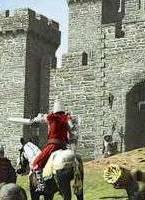
7
Overall Score
Graphics:
6/10
Performance:
9/10
Gameplay:
8/10
Extremely feature heavy, strong focus on strategy and customization
Some worlds are extremely low population, graphics are a little dated
